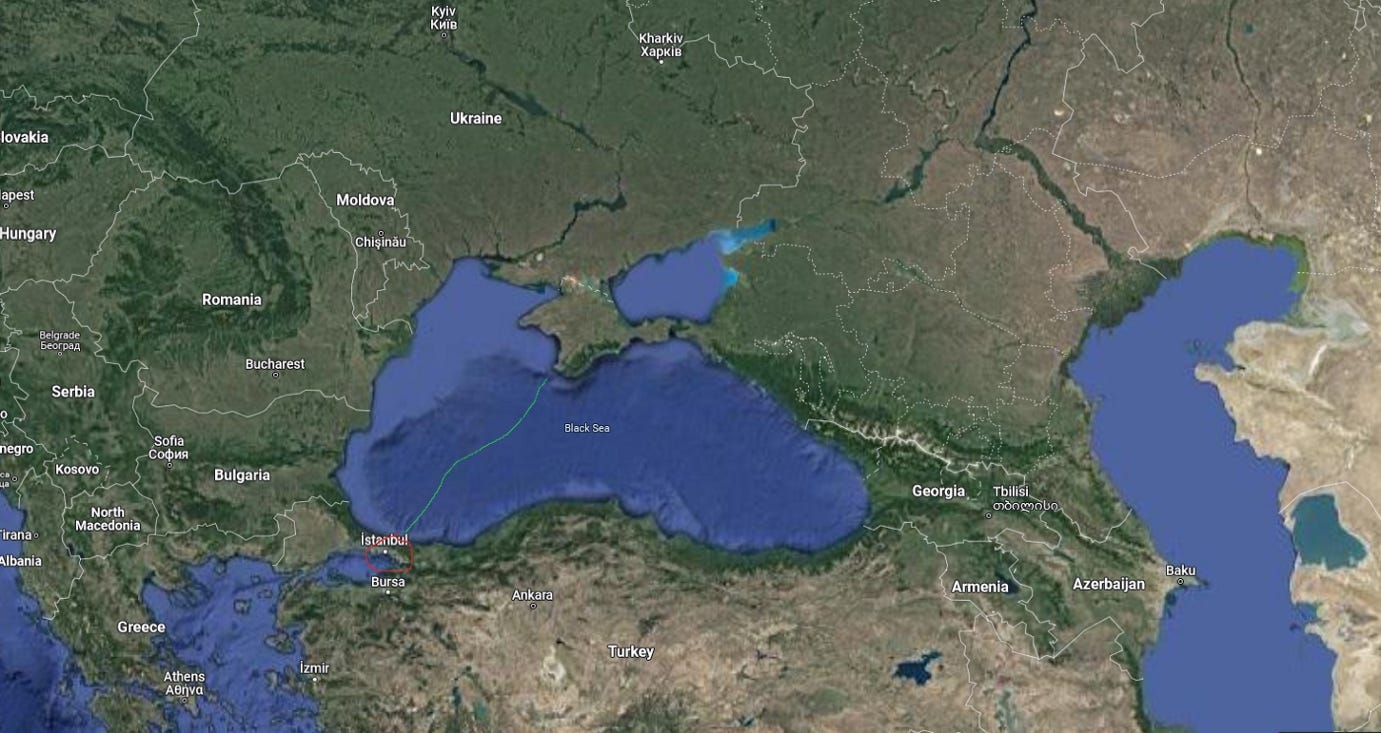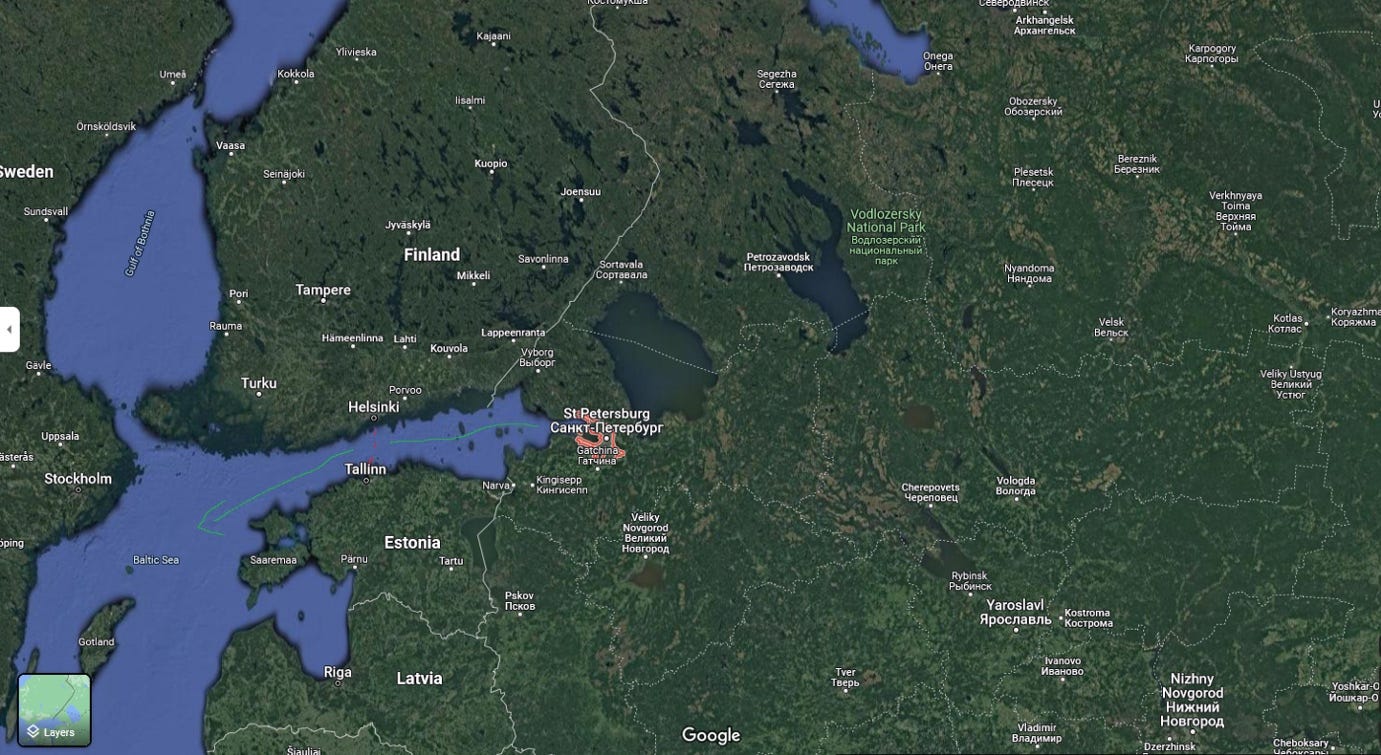Massive geographic problem that drives Russia's foreign policy
Nearly everything Russia does has to do with the sea.
Russia is the largest country on Earth in terms of land area and total area. It is nearly twice the size of the second largest country in the world, Canada. Despite its absolutely behemoth footprint, Russia has a serious problem that stems from its geography and has been driving Russian foreign policy for centuries.
Russia has a total area of 6,601,665 square miles but it has very few reliable ports.
The warm water ports are all connected to bodies of water that are easily cordoned off and controlled. The rest of their ports are located on icy northern seas which have a bad habit of freezing over during the winter months making them inoperable for large portions of the year.
The result is Russia is always looking for better warm water ports. This geographic nightmare has fueled conflicts all over the world. The Russian annexation of Crimea was driven by the desire for more ports. The Russian conflict with Japan over the Kuril Islands has to do with access to the sea. Russia’s resistance to Finland joining NATO and their military development in the Arctic all stem from this serious problem.
Easily enclosed
Many of Russia’s best ports are all located on bodies of water that are extensively controlled by NATO. Russia’s two most important ports are Novorossiysk and Saint Petersburg. Both of them pose serious challenges for a nation that craves control of its own destiny at sea.
First, the port at Novorossiysk. It is located on the eastern shores of the Black Sea and is one of Russia’s key ports for exporting agricultural products. However, Novorossiysk, like all ports on the Black Sea, has an issue in that access to the Black Sea must go through Istanbul.
And Turkey is a NATO nation.
In order for Russia to escape the confines of the Black Sea it must go through the Dardanelles. There was already talk of Turkey potentially closing the straits to Russian warships during the outbreak of the war with Ukraine. NATO control of Istanbul poses a serious threat to Russian power and commerce.
Saint Petersburg has the same problem. The port of Saint Petersburg lies on the shores of the Gulf of Finland which also empties into a small body of water that is ringed by NATO countries. In order for Russian ships to escape the Gulf of Finland they must take a long route through the Baltic Sea and through the straits around Denmark before they reach the North Sea and finally the Atlantic.
Currently, Finland is not a NATO nation but there are rumblings that they want to potentially join the alliance. One only has to look at a map to see why that would be disastrous for Russia.
Having Finland become a NATO nation would give NATO a narrow neck to choke off between Helsinki and Tallinn. This distance between these two ports is just 50 miles. Estonia is already a NATO country.
Between Istanbul and the Gulf of Finland NATO can easily choke off all of Russia’s major ports with little effort or consequences. This explains why Russia has made such an effort to remain on friendly terms with Turkey and why they are so opposed to Finland joining NATO. It has little to do with land borders and everything to do with sea routes.
All of Russia’s other major western ports lie on the Arctic edges of the country which are all unreliable during the cold half of the year. It is no wonder Russia is investing in Arctic technology and are likely rooting for global warming to thaw their ports.
Looking East
In the Far East, Russia’s situation is hardly any better. They have one major port at Vladivostok that is reliable but the rest of the ports in Asia suffer from the sea ice problem.
The Russians used to own the strategic city of Port Arthur which gave them a second outlet into the South China sea. But they lost control of the port in 1905 to the Japanese who ceded it back to China in 1945.
Again, without Port Arthur, Russia’s path to open ocean must go past two allies of the United States: South Korea and Japan. Even though Vladivostok is a solid strategic port all shipping has to sail through a 133 mile wide stretch of water that stretches between Busan and Kitakyushu.
That is also why Russia has fought so vehemently to keep control of its possessions in the Kuril Islands. Japan (and the United States) wants Russia to give control of certain islands back to Japan. The international community feels that the islands were taken illegally and that Russian ownership was never properly established.
Sea control is once again at the heart of this issue.
Giving control of any of the islands currently controlled by Russia back to Japan would again pinch the Russian sea routes. Russia wants to be able to control these northern approaches to Vladivostok. Letting go of this control would again leave their major ports completely surrounded by potentially hostile powers. So Russia is refusing to give an inch to Japan. And it is not hard to see why.
Paranoid or Savvy?
Russia is a country ringed by ice and foreign powers. Every prosperous nation needs free access to the sea and Russia is in a precarious position. Gaining control of more ports and more open waterways is at the heart of Russia’s foreign policy and it has been for centuries. Many people like to call the Russian leadership paranoid but it is not hard to see why they would think that way. Being choked off from the sea is an awful fate for a nation.
What is especially frustrating is that rival nations such as the UK and the United States have more viable ports in single states than Russia does in its entirety. England is nearly impossible to blockade. In the US, the state of Florida alone has three major warm water ports that all dump out into different bodies of water.
The situation is blatant to anyone who can look at a map with a discerning eye. Russia is paranoid but that is because they can see a potential future in which all of their ports can be easily blocked by a US led alliance. Ignoring that reality would be foolish.
Conclusion
Next time you see Russia making moves on the world stage pull up a map and look at how it affects Russia’s access to the sea. It is no wonder that Russia wants Mariupol and Odessa in Ukraine and it is no surprise that they seized the Crimean Peninsula. There is a reason that Russia wants the Baltic States back in its sphere of influence and it has nothing to do with old borders — it has to do with the sea. Nearly everything Russia does has to do with the sea.
Russia’s war with Japan before World War I was about ports. Russia’s long history of meddling in the Balkans has to do with ports. Russia’s old desire to own Constantinople was because of ports. Russia’s new push for groundbreaking Arctic technology has to do with ports. Russia’s territorial tussle with Japan has to do with ports.
Because not having a reliable stable of ports when you are the largest country on the planet must be frustrating.





Excellent article reflecting true Russian geographical difficulties and very well explained... Too good.
Great article. Sea routes and access to world are getting pivotal role in modern geopolitics. Malacca route, south china sea, Suez canal, panama, Hormuz, are precious jewels which countries are eager to control.